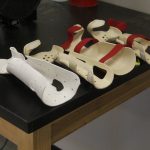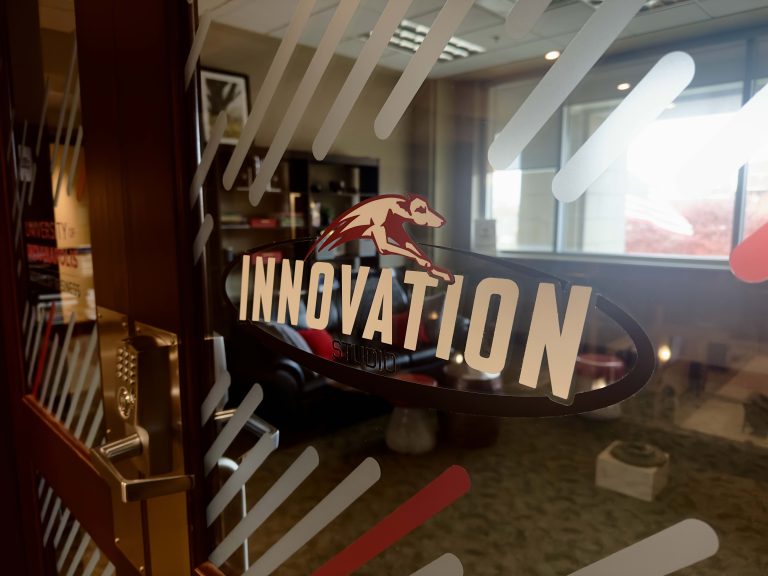Whether building machines that help the disabled walk or manufacturing devices that allow communication from across the sea, engineers are responsible for overseeing many developments of modern society. The University of Indianapolis made it a priority to create tomorrow’s engineers when it opened the R.B. Annis School of Engineering last year, and the school has continued developing since.
The R.B. Annis School of Engineering opened in March 2017 because of a $5 million donation by the R.B. Annis Foundation. The current engineering program contains four specific areas of study from which students can choose: software engineering, mechanical engineering, industrial & systems engineering and computer science.
Like other liberal arts colleges, UIndy requires that students complete a variety of courses on multiple subjects. Consequently, students get the opportunity to learn skills in other fields that are relevant to many other professions in addition to their own.
Associate Dean of the R.B. Annis School of Engineering and Associate Professor of Physics & Earth-Space Science José Sánchez believes this kind of education will create engineers that graduate from UIndy, not only with the skills necessary to excel their profession, but a well-rounded knowledge of the workforce in general.
“UIndy is a great fit [for engineering] because it has a strong liberal arts core,” Sánchez said. “When you look out engineers out there, they are technically competent but they are missing the other component [writing and speaking abilities] that employers have been looking for since the late 90s. Our program is very unique in that we are leveraging the liberal arts core with project-based curriculum and our design spine, which will enhance that liberal arts knowledge.”
According to Sánchez, the relationship between professors and students is very important to properly train and mentors students. The School of Engineering promotes and navigates that environment using a project-based curriculum. Sánchez recognizes the fresh talent that new undergraduates come into UIndy with and encourages professors to help develop that talent into something that translates to the workforce.
“Most students have their general education core, the core within your discipline which is project based and the design spine,” Sánchez said. “The design spine is nothing more than projects with external stakeholders. It [the projects] can be people outside the school of engineering or outside the university. So when students are sophomores, they are working with clients outside the university, I hope they know they can rely on their professors.”
Freshman software engineering major Joel Carpenter has experienced the commitment of his professors firsthand within the school, and said that the attitude goes beyond classwork and projects.
“The professors make it personal. When they see you outside of class, they make it a point to talk to you,” Carpenter said. “If they notice something is going on in your life, they make sure you’re okay. One day I was lost in my own thoughts and Dr. Sanchez pulled me to the side to talk to me.”
Carpenter said that in addition to the relationship between professor and student, the many projects characteristic of the engineering school are a valuable part of the curriculum. For example, according to Carpenter, he wrote the code that recorded the distance covered by a fuel-powered rocket and is currently working on the code for an autonomous salting machine that will run salt on the sidewalks to melt ice.
Aside from classroom work, Carpenter said that a lot of the expertise and knowledge offered to engineering students is being backed up by legitimate companies in the Indianapolis area. He said that this will help UIndy graduates better accommodate the needs of the engineering industry.
“It’s good because [of] the way Sánchez does it,” Carpenter said. “He goes and finds companies in central Indiana and teaches the course the way the companies want it, not the way he thinks it should be taught.”
Assistant Professor of Engineering David Olawale said that all institutions require a level of diversity to properly find those possible industry leaders and innovators. According to Olawale, the different cultures present on campus are vital to finding and developing the engineering school to its highest potential.
“Our school is very diverse,” Olawale said. “Firstly, we have our faculty come from different parts of the world. I am from Nigeria. We have faculty from America, Puerto Rico and Bangladesh. I think that’s very helpful. [It] means that any student from every part of the world would be very comfortable here. We can give them confidence and help [instruct them] without them feeling left out.”
Olawale said that the range of students that make up the engineering school also translates to the educational curriculum. Carpenter agreed, saying that the School of Engineering’s international population helps other students think of new ideas and gain a broader view of the world.
“With the students and faculty, there are a lot of different countries and cultures represented in the school of engineering,” Carpenter said. “I have learned a lot about the cultures of the world. It [will] really help me understand how I can use that to further my career and knowledge.”
Sánchez said he has aspirations to expand the school in the future and encourage an even more diverse student body and education. According to Sánchez, it’s important that the engineering school aim for more cultural inclusion in order to find leaders that push the industry forward, and the School of Engineering is prepared to create those leaders.









